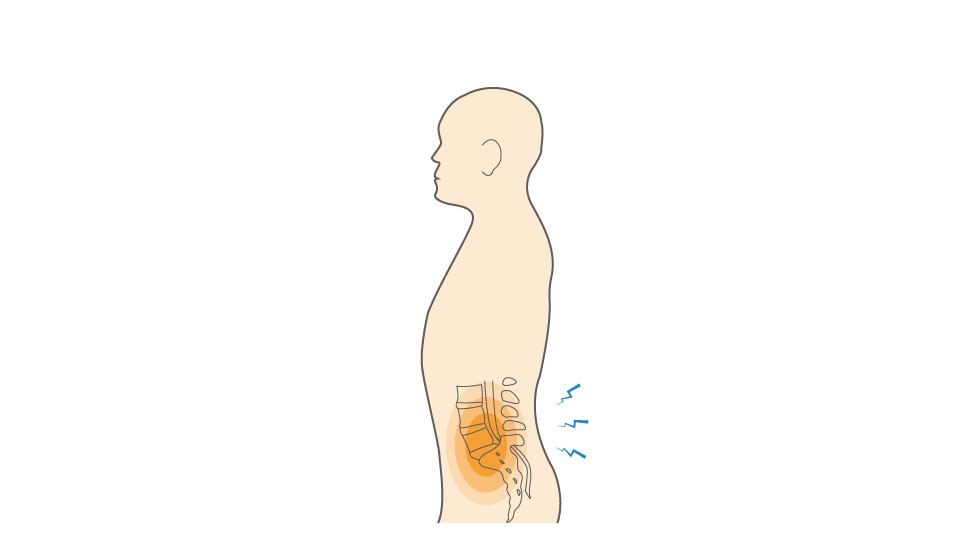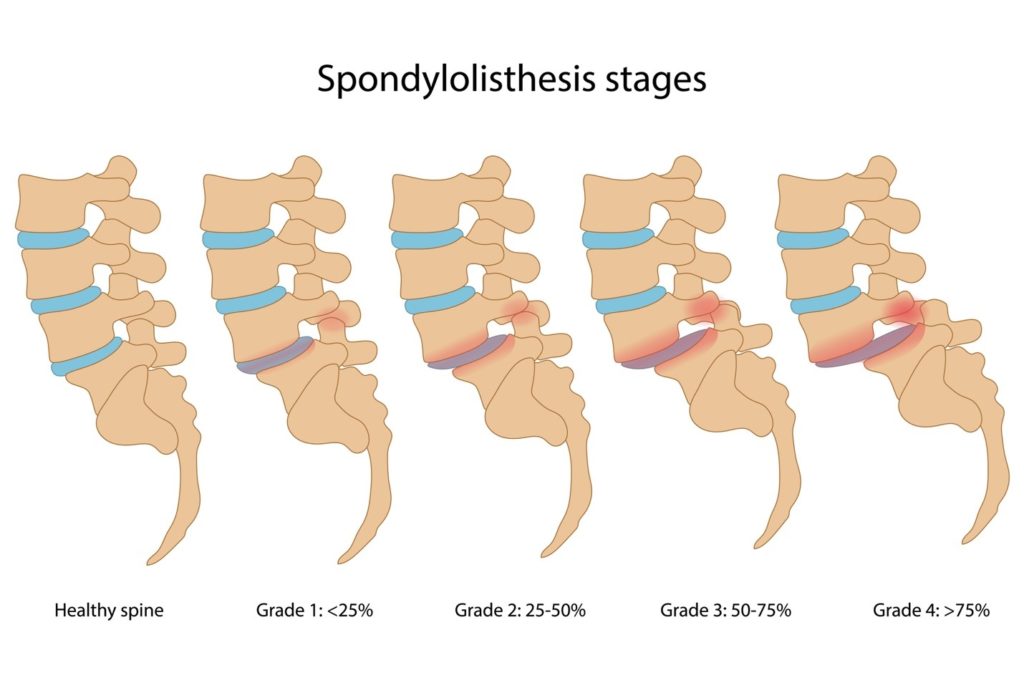Spondylolisthesis (Degenerative) Symptoms & Treatment
Spondylolisthesis (degenerative) is a condition in which one vertebra of the lower spine "slips" forward about another. Spondylolisthesis is usually caused by stress on the joints of the lower back. It can also be associated with degenerative changes (arthritis) of the spine, particularly in cases related to the aging spine. Although this condition can cause low back pain and sciatica, it may cause no symptoms.
Start with our quick Symptom Assessment or connect directly with an Upswing Coach today.
Request an AppointmentReady to take the next step?
Start your symptom assessment or connect with a coach instantly.
Find Relief TodayOverview
Spondylolisthesis is a condition in which one of the vertebrae of the lower spine “slips” forward about another. Spondylolisthesis is usually caused by stress on the joints of the lower back. It can also be associated with degenerative changes (arthritis) in the spine. Although this condition can cause low back pain and sciatica, it may cause no symptoms.

What causes Spondylolisthesis (Degenerative)?
There are several causes of Spondylolisthesis as shown below:
- Type 1 – Congenital – this means you are born with a defect in one of the vertebrae, typically the L5 vertebra.
- Type2 – Isthmic – this occurs in children and young people, usually as a consequence of repeated stress on the low back.
- Type 3 – The degenerative (late in life) type is an acquired condition resulting from chronic disk degeneration, leading to long-standing lumbar instability and gradual slippage, usually at L4-5. This type is often seen in individuals with an aging spine.

Symptoms
The most common symptom of Spondylolisthesis is low back pain
Common symptoms also include:
- Pain in the lower back that feels like a muscle strain
- Pain that spreads to the buttocks and thighs
- Pain that gets worse with physical activity
Patients with slipped vertebra (spondylolisthesis) may experience tingling or numbness due to pressure on the nerves.
When to see a doctor
You should see a doctor if you have persistent back pain unresponsive to conservative measures. If you are experiencing any neurologic symptoms like numbness or tingling in your legs or weakness in either lower extremity you should set up an appointment to see your physician During a physical examination, he or she will look for signs of tenderness and test their range of movement. They may look to see if there are any issues with your gait or how you stand. X-rays or other imaging tests may be taken to confirm if there is a fracture of a vertebra. Imaging tests also help doctors evaluate how much slippage has occurred, which they often describe as “low grade” or “high grade.”
Non-operative treatment
Non-operative treatment is usually effective for cases of low grade spondylolisthesis. Examples of conservative treatment include:
- Rest from sports that place stress on the back
- Nonsteroidal anti-inflammatory drugs (NSAIDs), such as ibuprofen and naproxen, for pain relief
- Wearing a back brace to limit movement and promote healing of the muscles and bones of the lower back
- Physical therapy for muscle stretching and strengthening
Try these exercises to help address your condition:
Below is a PDF of the Exercise Program
Surgical Treatment
Your doctor may recommend a surgical procedure if you have a high grade spondylolisthesis or if conservative measures are not effective in relieving symptoms. Your doctor will advise if surgery is an option you should consider. Surgery often involves a decompression and spinal fusion.
Recovery
Recovery from spondylolisthesis varies depending on the grade of the disease. When the grade of the spondylolisthesis is low often the problem can be treated non operatively with a relatively quick recovery. Recovery from surgery can often take up to 6 months.
Find the Support You Need — Right When You Need It
Whether you’re managing pain for the first time, need ongoing guidance, or require expert medical care, we’re here to help you every step of the way.
ORTHO DIRECT
Video visit with an orthopedic doctor for advice and a care plan.
$30
/MonthMRI DIRECT
Fast, affordable MRI with orthopedic review. No insurance required.
$499
/MonthFrequently Asked Questions
Is surgery always required for spondylolisthesis?
Most cases, especially low-grade slips, respond well to non-operative treatments such as physical therapy, NSAIDs, and bracing. Surgery is typically considered only when symptoms persist despite conservative care.
How effective is physical therapy in managing symptoms?
Physical therapy is highly effective for many patients. It focuses on stretching tight muscles, strengthening the core, and improving posture, which helps stabilize the spine and relieve pressure on affected nerves.
What are the benefits of early diagnosis?
Early diagnosis allows for timely intervention with non-invasive strategies, potentially preventing the progression of the slip and avoiding surgery. It also helps patients make lifestyle adjustments that protect spinal health in the long term.
Can lifestyle changes help manage this condition?
Adopting a spine-friendly lifestyle—including low-impact exercise, ergonomic posture, weight management, and avoiding heavy lifting—can significantly reduce symptoms and improve mobility and comfort.

